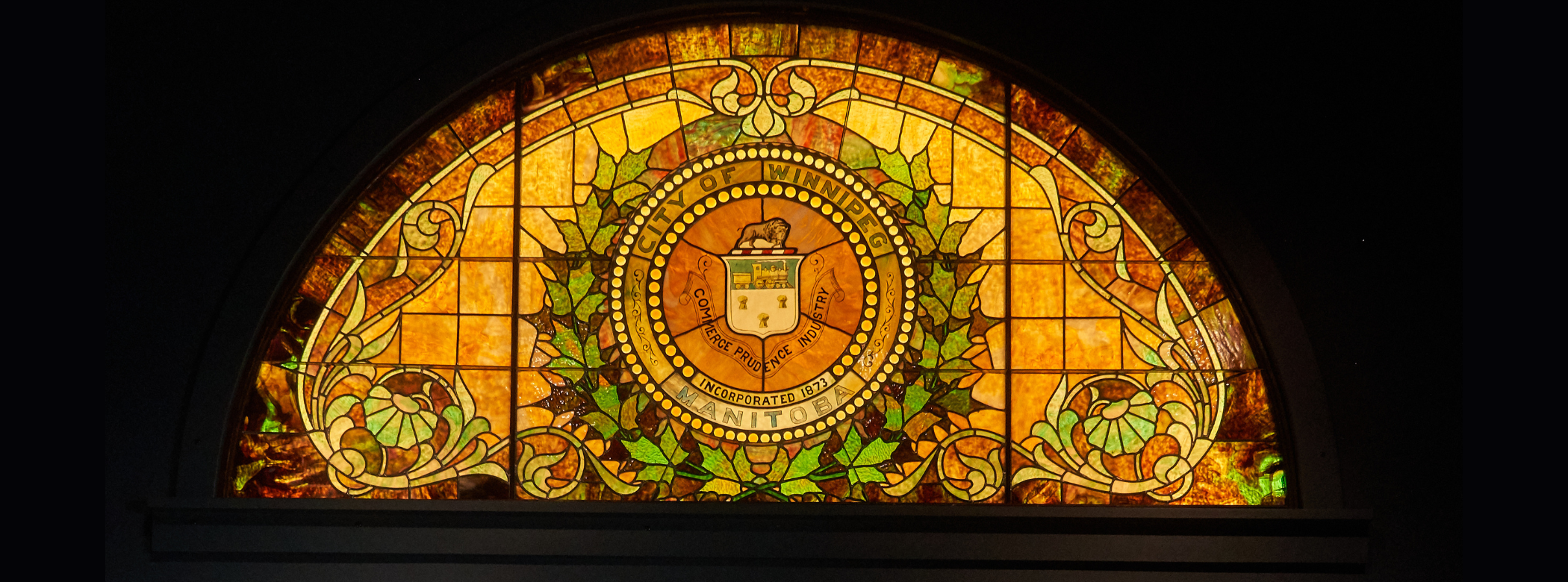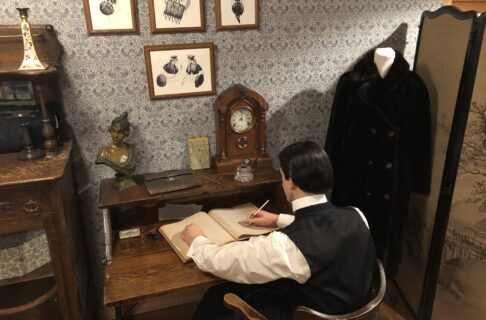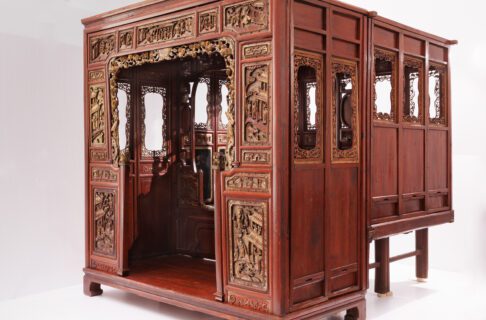Posted on: Monday May 11, 2020
In October 2019 the Manitoba Museum opened the Winnipeg Gallery, a permanent new exhibition space about the history and people of Winnipeg. The gallery features a large stained glass window that displays the old city crest.
This window was one of two that was salvaged from the old city hall building when it was demolished in 1962, and recent research has revealed more history of this piece and the artist who made it.
Header image above: The city hall stained glass window after restoration and installation in the Winnipeg Gallery. Photograph copyright Ian McCausland/Manitoba Museum.
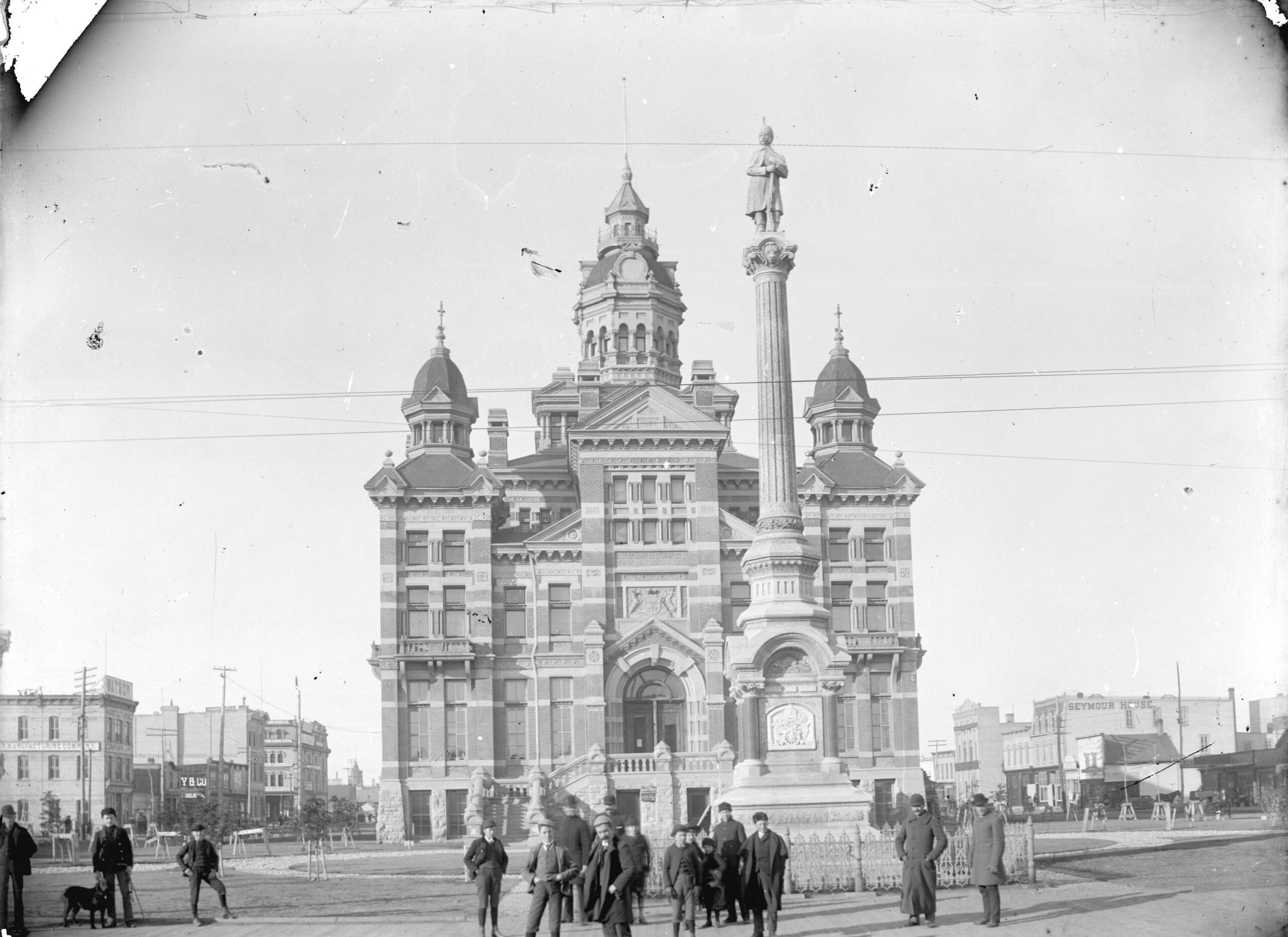
An arched transom window (a window placed above a door) was included at both the front and back entrances to the city hall. Early photographs, however, show that these windows were made with clear glass, not the elaborate and colourful stained glass that we show off in our gallery. Looking at photographs from different archives narrowed the date of the installation of the stained glass window to sometime between 1898 and 1905, but it wasn’t until I found a short article in the Manitoba Free Press that I knew the exact date.
Image: The second city hall opened to great fanfare in 1886 on Main Street, replacing the poorly built first city hall, which only survived 7 years. The new building, designed by Charles and Earle Barber, was a marvel of architectural exuberance. At the time it was considered “one of the handsomest and cheapest City Halls in the Dominion.” It did not, however, include our window! Photograph by Norman Caple, circa 1890, City of Vancouver Archives, LGN 630
May 26, 1903
“The city hall is receiving finishing touches of its renovating, the main entrances having their old plain glass windows replaced by two stained glass windows, over each of the doors. These windows are bold and masterly in design, the seal of Winnipeg is placed in the centre, set in a frame of jewels, surrounding which is a wreath of light and dark maple leaves…”
That’s our window. Early photos also show that the windows faced inwards, meaning they were meant to be seen from inside, receiving the full illumination of daylight from the exterior. It also means that the Winnipeg crest was backwards when you were entering City Hall from the outside!
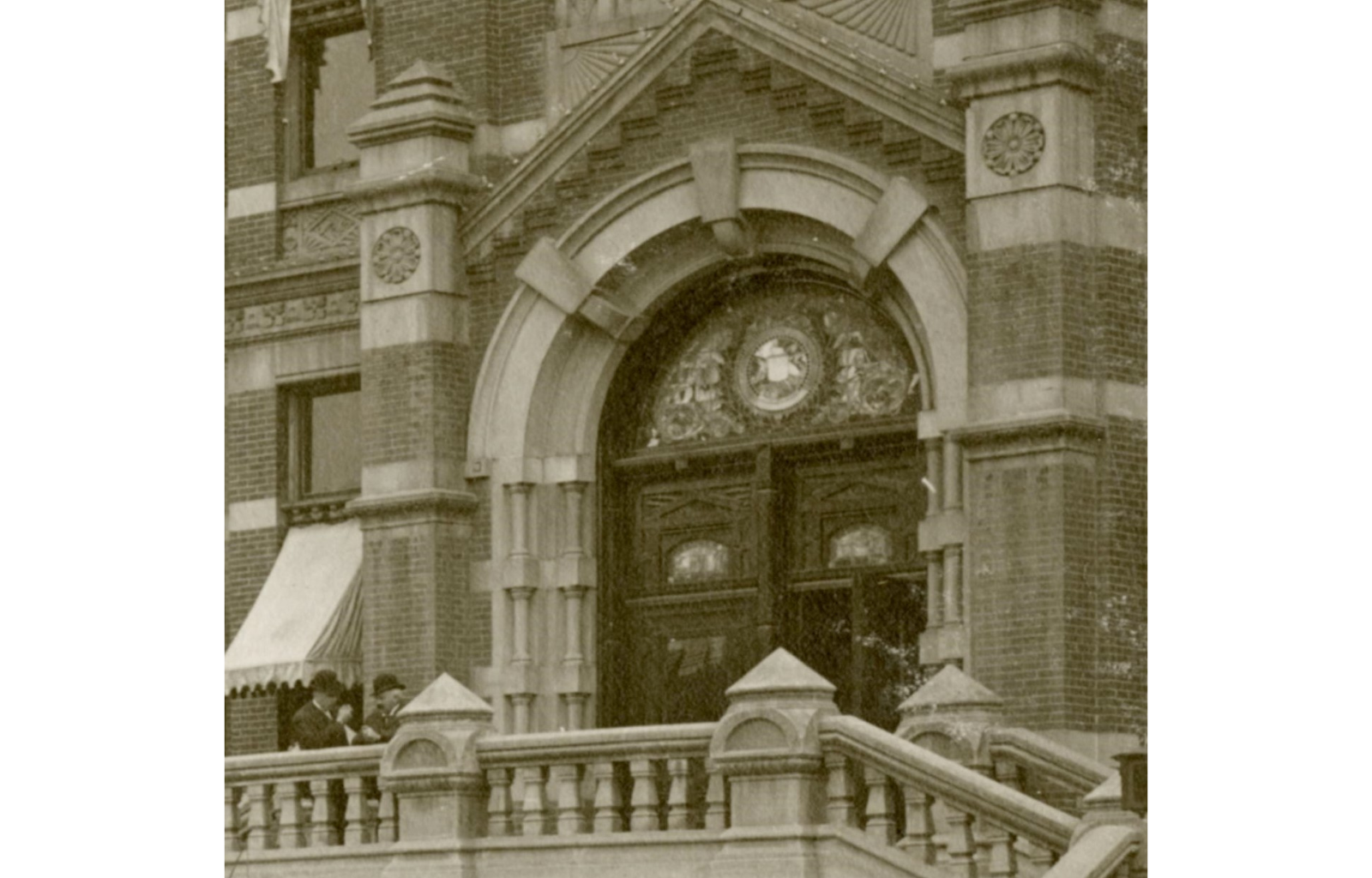
This detail of a photograph from 1910 clearly shows our stained glass window (at least the back of it). City of Winnipeg Archives, i03103.
The Artist
The window was designed and made by John Raphael Allward, who moved to Winnipeg with his wife and son in about 1902. Allward was born in Toronto in 1856, and was the cousin of the famous Walter Seymour Allward who designed the Canadian National Vimy Memorial in France. John Allward studied art in New York under the master stained glass artist John La Farge. Allward was a specialist in large allegorical stained glass windows, which involved painting scenes directly onto glass, and he made windows for churches throughout North America. He set up shop with a partner at 253 Main St., under the name “Allward and McCormick Glass Co. Ltd.” Allward was also one of the founders of the Manitoba Society of Artists, which held their first public exhibition of 300 paintings in late 1903. Allward served two years in the Great War (at the age of 60!), and when he returned to Winnipeg he sold the business and retired to Seattle. After the 1920s, the popularity of stained glass windows in public places and private houses waned – most examples that survive in buildings today are over one hundred years old.
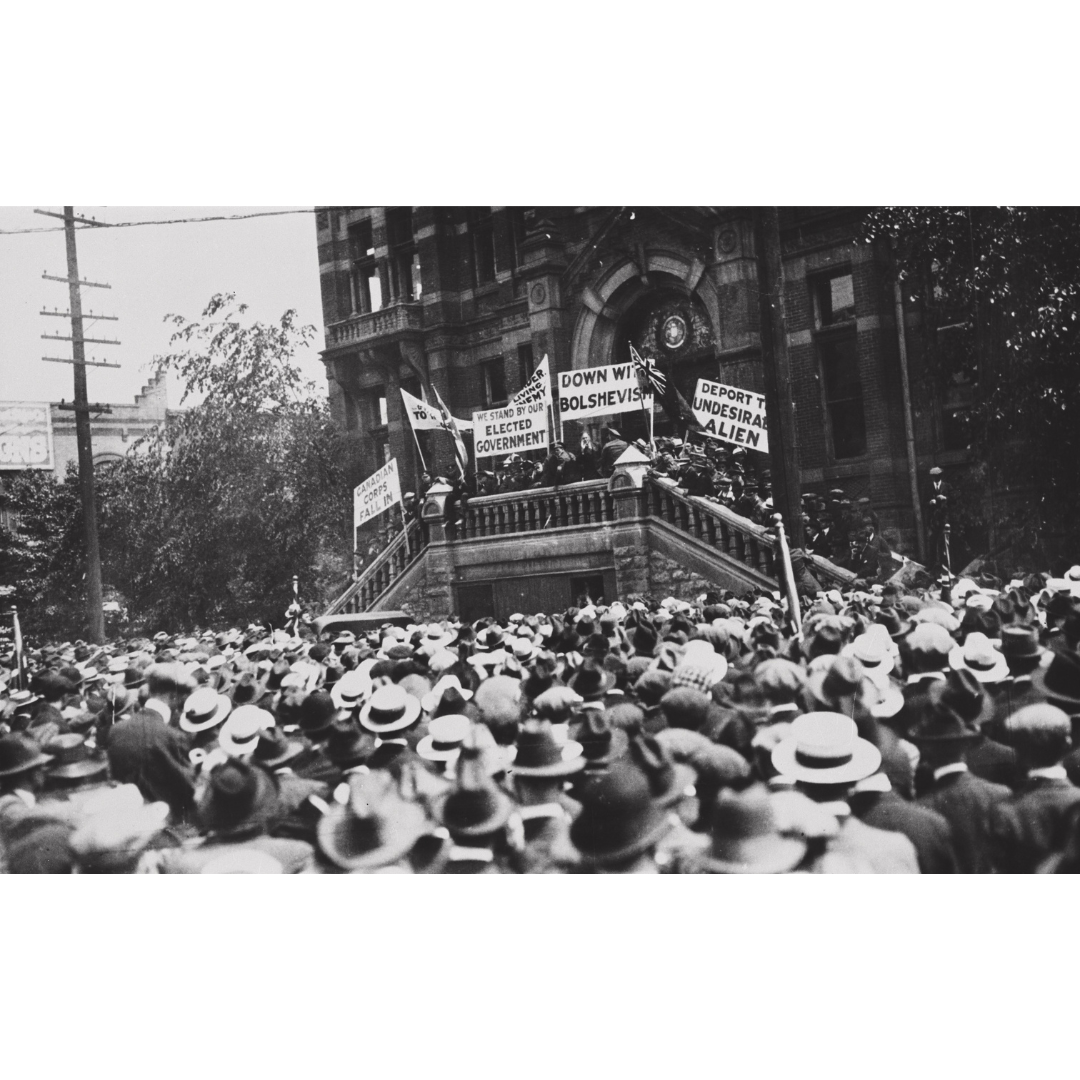
The window witnessed the turmoil of the 1919 General Strike. Archives of Manitoba 3 SIS N12296
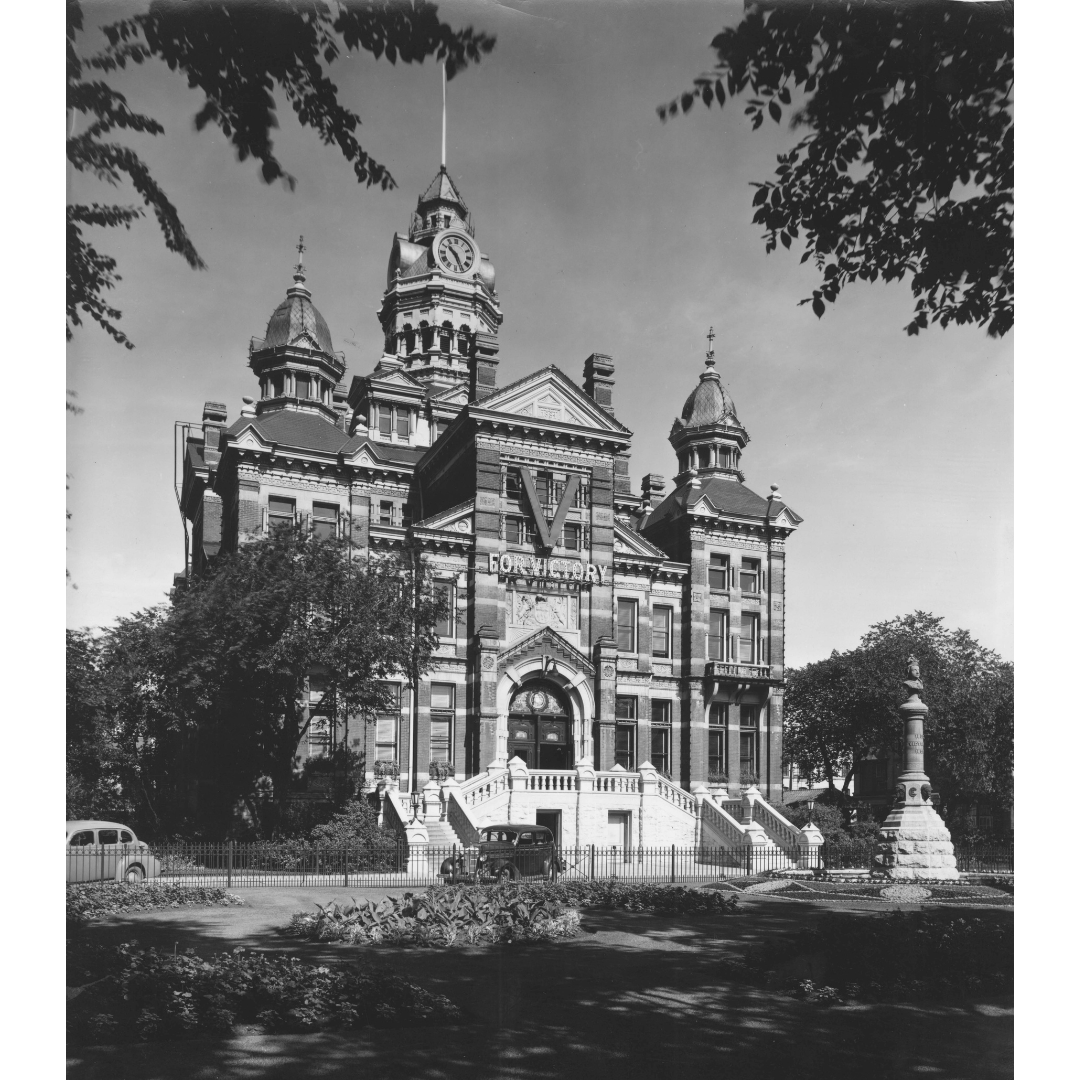
The stained glass window also kept an eye on efforts to raise Victory Bonds in support of Canadian mobilization during the Second World War, circa 1944. City of Winnipeg Archives, i01438
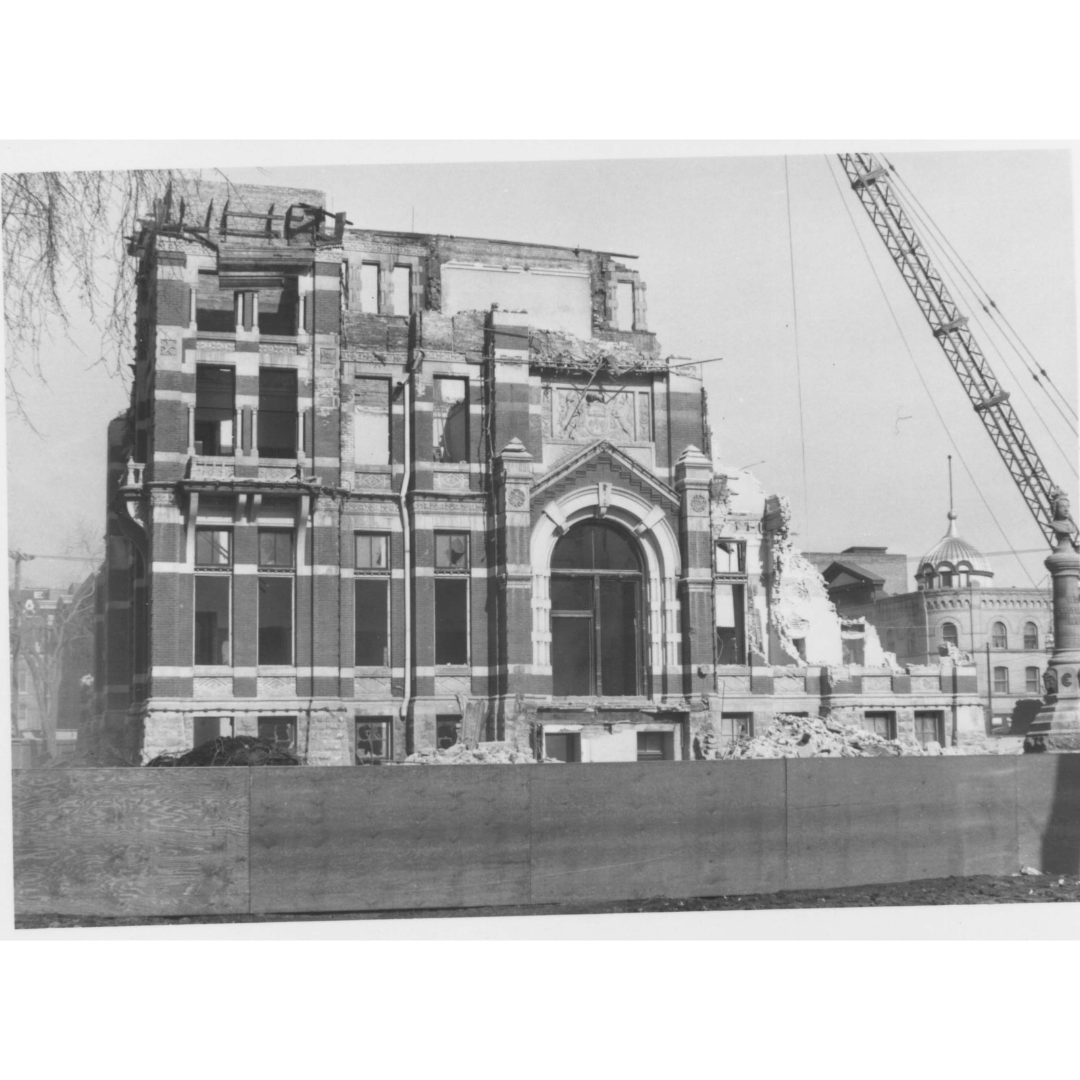
In this photo, we can see that the stained glass window had been removed during demolition in 1962. It was stored at the former Carpiquet Barracks Site (north of Polo Park) until it was donated to the Manitoba Museum in 1974. It was in storage until 2018, when restoration began. City of Winnipeg Archives i01473.
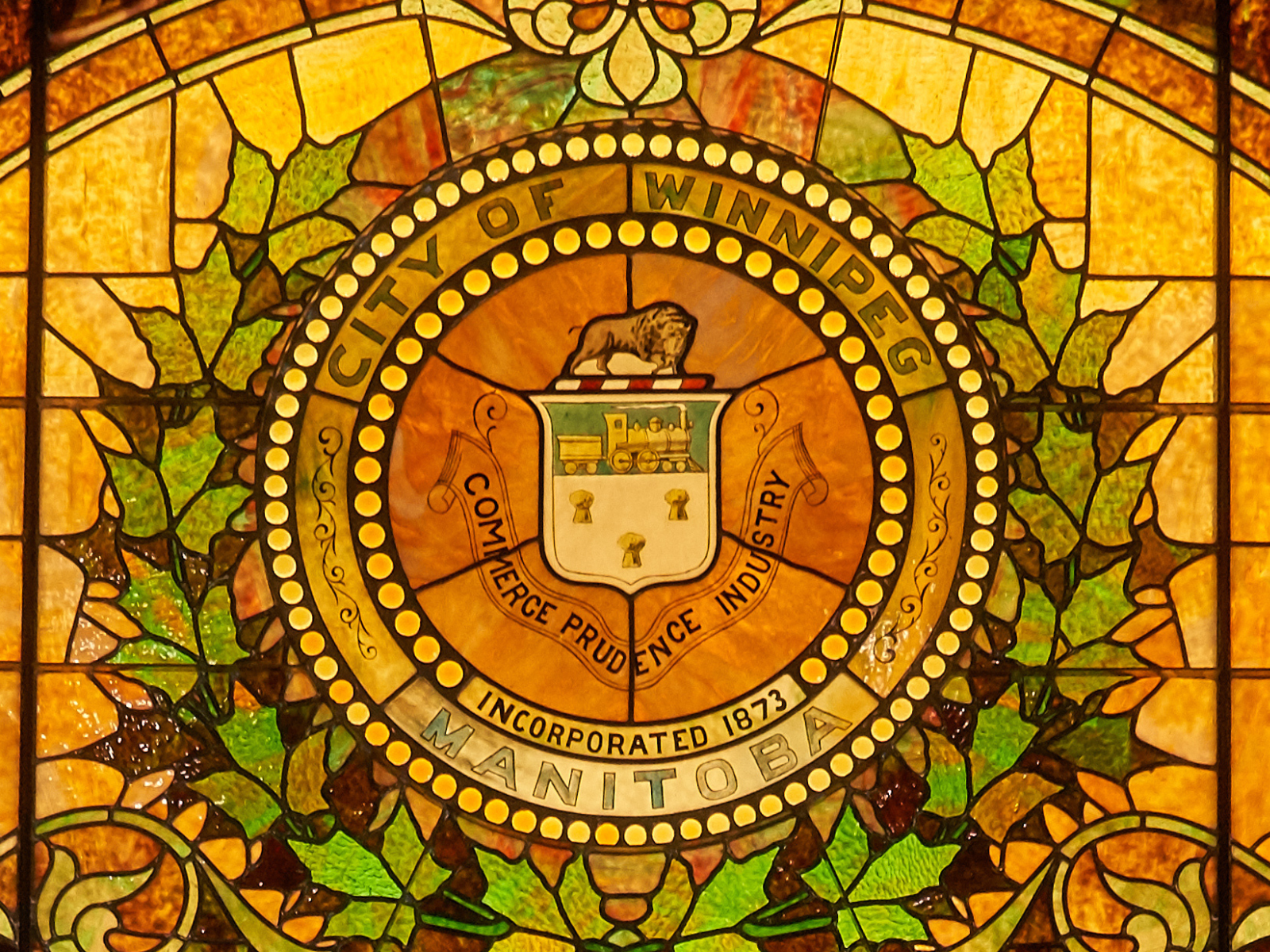
For more information about the incredible restoration process of this window, check out the Collections and Conservation blogs Monumental Moves: Sweating over Big Artifacts, Part 1 and Part 2.
Image: The old City of Winnipeg crest and its inspiring motto, “Commerce, Prudence, Industry” shines forth again for all visitors to see in the Winnipeg Gallery. Nice job, John Raphael Allward! Photograph copyright Ian McCausland/Manitoba Museum.




